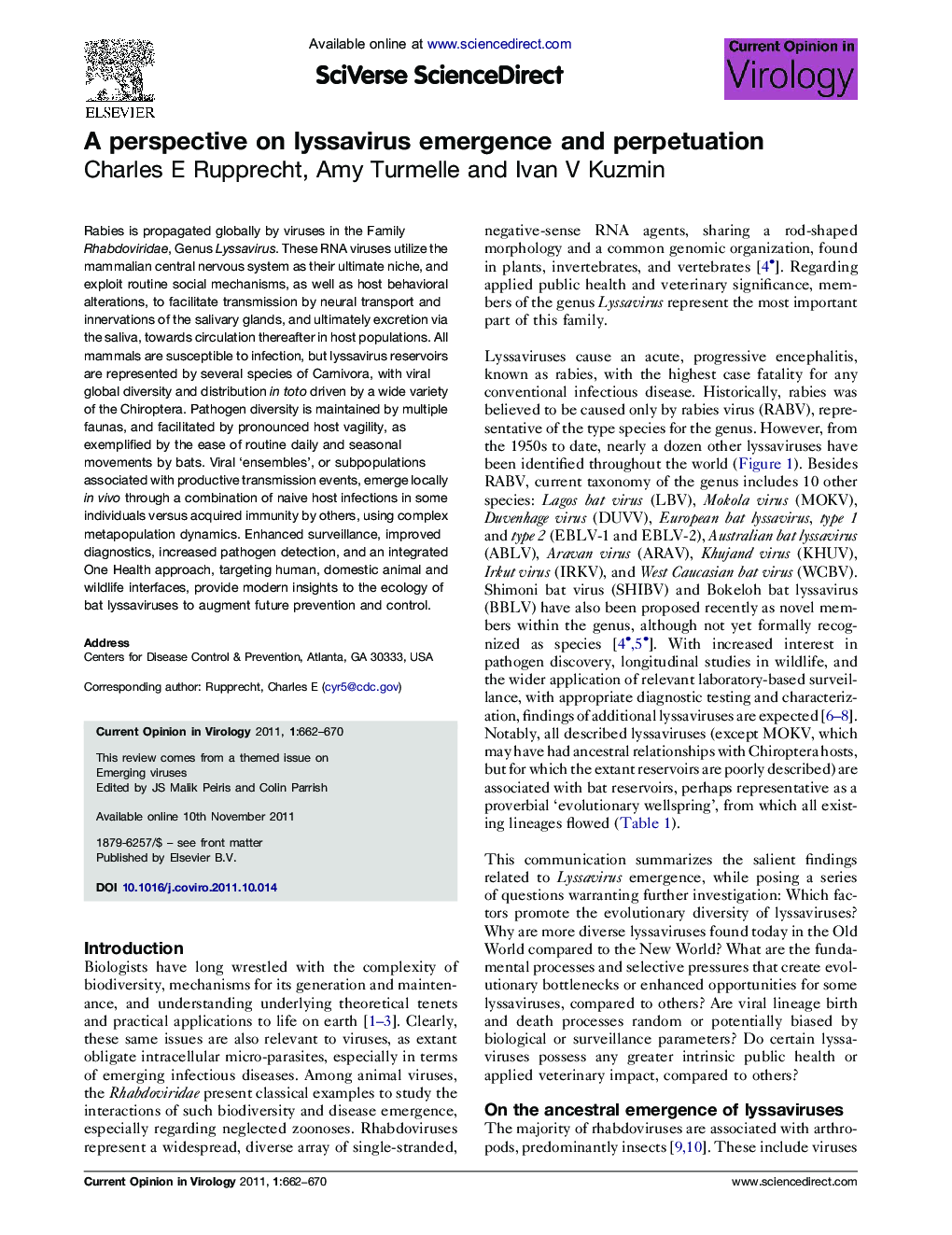| Article ID | Journal | Published Year | Pages | File Type |
|---|---|---|---|---|
| 2473424 | Current Opinion in Virology | 2011 | 9 Pages |
Rabies is propagated globally by viruses in the Family Rhabdoviridae, Genus Lyssavirus. These RNA viruses utilize the mammalian central nervous system as their ultimate niche, and exploit routine social mechanisms, as well as host behavioral alterations, to facilitate transmission by neural transport and innervations of the salivary glands, and ultimately excretion via the saliva, towards circulation thereafter in host populations. All mammals are susceptible to infection, but lyssavirus reservoirs are represented by several species of Carnivora, with viral global diversity and distribution in toto driven by a wide variety of the Chiroptera. Pathogen diversity is maintained by multiple faunas, and facilitated by pronounced host vagility, as exemplified by the ease of routine daily and seasonal movements by bats. Viral ‘ensembles’, or subpopulations associated with productive transmission events, emerge locally in vivo through a combination of naive host infections in some individuals versus acquired immunity by others, using complex metapopulation dynamics. Enhanced surveillance, improved diagnostics, increased pathogen detection, and an integrated One Health approach, targeting human, domestic animal and wildlife interfaces, provide modern insights to the ecology of bat lyssaviruses to augment future prevention and control.
► Lyssaviruses exploit the CNS as a primary niche, and perpetuate in mammalian hosts. ► Bat biodiversity, sociality and vagility drive the global variety of lyssaviruses. ► Random mutation, genetic drift and stabilizing selection maintain viral ensembles. ► Intraspecific bottlenecks and interspecific opportunities arise in viral populations. ► Ecological factors impacting bat communities continue to influence rabies emergence.
